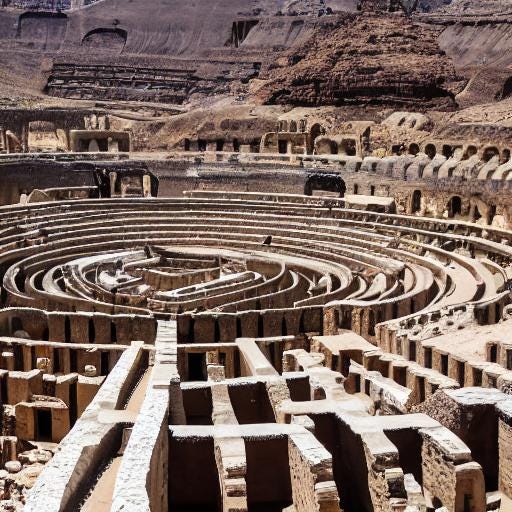- The Blend
- Posts
- Low poly realism
Low poly realism
No smooth shading, and it almost looks real?
The Blend.Become a better 3D artist in 5 minutes each week. By Samuel Sullins |  |
Did you notice they changed the default render settings?
Happened a while ago—but I’m still not used to it.
I left the defaults in by mistake—had to wait a whole hour for this render.
It’s finally done (at least it’s really nice and high-resolution now. Maybe the wait was worth it.) Have a look:

Rendered in Cycles @ way too many samples
The cool part is that everything is a low poly mesh, shaded flat. No smooth shading, no subdivision, no bevels.
Yet, somehow, it doesn’t look very low poly.
It looks almost realistic.
It has to do with the lighting and the materials. The lighting is pretty realistic. We’re familiar with the way a lamp lights up a wall. Since this lamp does what you’re expecting, it feels realistic.
The materials are simple, too, but they help. The wood is reflective, like polished wood should be. The lampshade is a little see-through (at least it’s supposed to be.)
On the wall, there’s a very faint Voronoi texture, to add a little detail. It barely even shows in the final render :)
1 Technique
This one is about stealing.
Steal lighting from real life. If you have a light source in your scene, figure out what kind of light that makes in real life.
Then try to copy that in Blender, like I did with the lamp above. I made a lampshade, placed a Point light inside, and turned it way up (and softened it with a higher Radius.)
Emulating real lighting like this is a great trick for adding a weird layer of realism to a completely low poly scene.
Here’s some different lights you could try:
Sunlight: cast tree-branch shadows over your scene, so it feels like it’s outside.
Lantern light: cast lantern-shaped shadows on the wall.
Streetlight: let a Spot light cast a beam straight down (add fog for this one, so you can see it!)
If you try this technique, show me in a reply! (I read every reply.)
1 Low Poly Pick
This scene (by Mohamed Chahin) is a great example of the miniature effect.
Miniatures are common in low poly. When you zoom way out and show your low-poly models as tiny, they suddenly look less simple.
Since tiny things are expected to have less details, your low poly models suddenly feel a lot more realistic.
This scene also does an excellent job of worldbuilding. You can feel that this image is only a tiny piece of a much larger world. You can even imagine little people rowing the tiny boat and living in the tiny house.
The shallow depth-of-field effect is another great trick for showing the miniature scale of the scene—it looks like it’s a very up-close photo.

Image credit: Mohamed Chahin
Can't think what to blend?
Try something old. Something you’d see in an old, black-and-white photograph.
P.S. I’m trying a multi-part fiction—Chapter 1 & 2 are already out. Give ‘em a read if you’re into that kind of thing.
Enjoy this newsletter? Please forward to 1 friend. They’ll love it, then later you guys can talk about how awesome you are and what a great find you made.
New to the newsletter? Time to sign up. Seriously—it’s only getting better around here.
p

Reply